When I first began to get into using fountain pens regularly, I quickly realized the value of ink blotters and blotting paper. Such an elegantly simple solution to the problem of smudging wet ink, and it works extremely effectively.
What are ink blotters? An ink blotter uses very absorbent bibulous paper to remove excess ink from the page when writing with a fountain pen. It may be a simple piece of blotter paper pressed down by hand, or it may be attached to a “blotter rocker” or “blotter roller”.
But there’s a bit more to know than that …
Table of Contents
A Short History of Ink Blotters
Before the invention of ink blotting paper, starting back in the days of quill pens, people would sometimes sprinkle salt on their writing as a way to quickly dry up excess ink. It worked to a degree, but you only need to go back and read some documents of that era to see that smudging was a problem.
In the early 1800’s, the first “hand blotters” were devised.
Ink Blotter Rockers
These had a piece of felt attached to a curved base, and were used by rocking the felt over the page so that it absorbed the freshly laid down ink. This was a marked improvement, but the felt was expensive and tended to become stained before long and could leave marks.
Then, in 1856, the company of Joseph Parker and Son, began producing bibulous paper for ink blotting. Bibulous paper is a fibrous paper that is also used in laboratories for test strips. You may also recognize it as very similar to the paper used by watercolor artists.
This highly absorbent blotting paper (with the thickness of a card stock) was easily cut to size and attached to a rocker using a plate and screw. The paper retained ink far better than felt, and could be replaced quickly and inexpensively.
The first rockers were made of wood, but over time they became more ornate and were made from glass, precious metals, ceramic, porcelain, and even stone. Today, they can be found in antique stores and are prized by collectors.
The following pictures show how an ink blotter rocker is used …
A variation on the idea of the rocker was another design in the form of a roller.
Ink Blotter Rollers
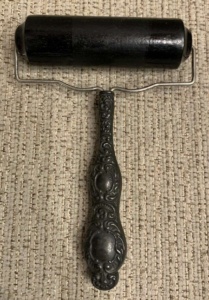 The basic idea was the same; botting paper was wrapped around the roller and glued in place. It could then be rolled over the page to absorb the ink.
The basic idea was the same; botting paper was wrapped around the roller and glued in place. It could then be rolled over the page to absorb the ink.
These blotter rollers can also be found in antique shops and through online auctions, but not as commonly as the rockers. They never quite gained the same popularity, probably because they didn’t work quite as well.
So far we’ve established that fountain pen users were the first rock ‘n rollers. (Sorry!)
By the 1950’s, even though fashionable desk sets still included a rocker, many people had found that it was just as effective (and a little more convenient) to simply use blotting paper sheets and press them down on a page by hand. Advertisers were quick to see an opportunity and capitalize on it.
Advertising Ink Blotters
Companies began giving away blotter sheets with their advertising messages and contact details. They were like extra large business cards, but clients appreciated receiving them and kept them on their desks right in front of them to use.
Another group who found blotter sheets a perfect promotional tool were politicians. They printed their campaign advertising on them and sent them out far and wide. Click here to see some typical examples on the historical site of the U.S. Congress.
How to Use Blotting Paper Sheets Today
Unfortunately, no advertisers are still giving away free blotter sheets, but you can still buy them (see below). And the good news is that a sheet can be used over and over again, so a pack will last a very long time. I last bought a pack of 10 sheets nearly three years ago, and I’m still working my way through them.
I use the sheets in several ways …
- They come in a size that’s quite convenient to slip into a regular A5-size journal or notebook. I keep one in every notebook I’m using regularly, and whenever I write anything I simply move the sheet to that page before closing. That way I never have to wait for ink to dry.
- For my passport-size Traveler’s Notebook, I cut a sheet down to the smaller size and add a small brass tab to the top corner so I can always find it easily.
- I also keep a replica classic ink blotting rocker on my office desk (mostly for nostalgia, but it does work quite well), so I cut another sheet into strips that fit the rocker.
Where to Get Ink Blotting Paper
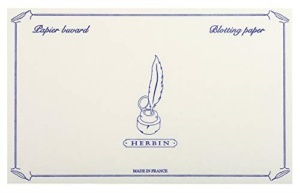 The most popular ink blotting sheets available today are made by the French ink, pen and stationery company, Jacques Herbin. They are readily available on Amazon (Click Here). A pack of 10 sheets, in either white or pink, costs a dollar a sheet.
The most popular ink blotting sheets available today are made by the French ink, pen and stationery company, Jacques Herbin. They are readily available on Amazon (Click Here). A pack of 10 sheets, in either white or pink, costs a dollar a sheet.
Ink Blotter Alternatives
What else can you use instead of ink blotting sheets? Any very absorbent paper, such as kitchen paper towel, will work reasonably well. Just be sure to press it down carefully or you might see some smudging. Nothing works perfectly as well as the purpose-made (bibulous) blotting paper. You’ll probably end up with a little ink on your fingers using these other alternatives too.
Over to you! Do you use ink blotters? Have any ideas you’ve found useful? Leave a comment below and share it with us.
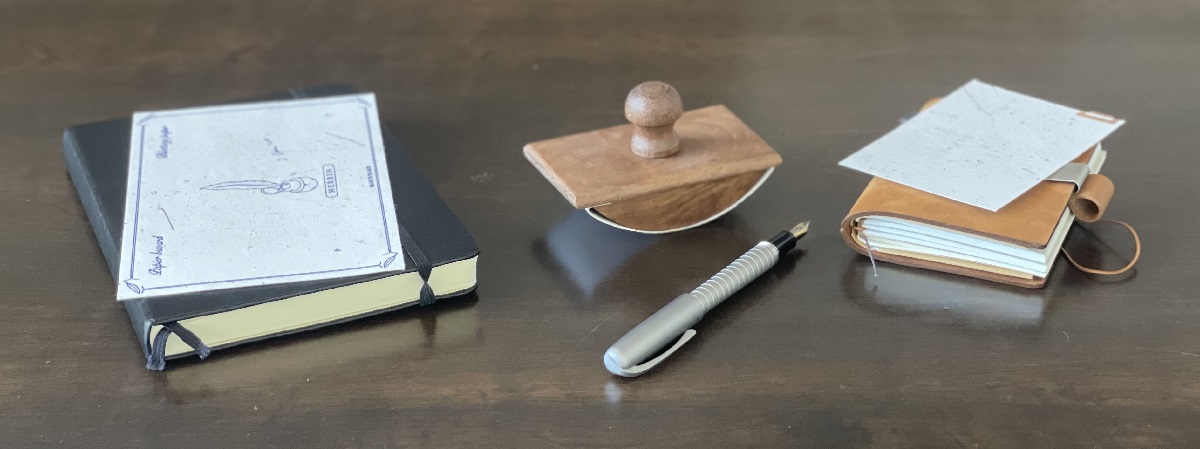
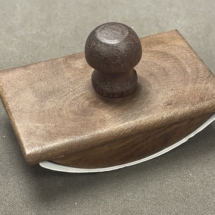
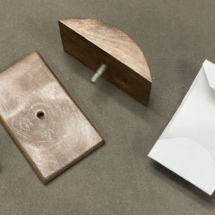
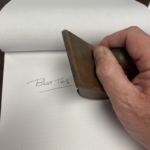
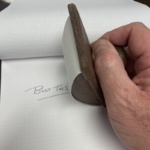
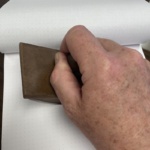
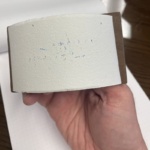
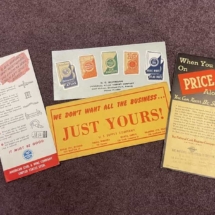
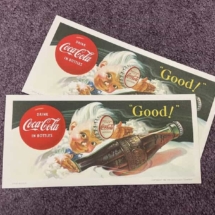
Good morning,
When I made my very first fountain pen purchase, I made sure to include a rocker blotter and pack of papers. The paper set I got was the Herbin brand. I cut a sheet to size for the rocker, and slipped a full sheet into the inside pocket of each A5 size journal/notebook that has one. Otherwise it’s just slipped between the pages.
But I found a good substitute for the dollar-a-sheet Herbin paper. Amazon carries Arnold Grummer brand blotting paper. It’s listed as being used for homemade papermaking, but one reviewer said it was really good for ink blotting. So I bought some. The price on Amazon is twice the price of Herbin most anywhere, but I got so much more product-wise. Each Grummer sheet is 9.5×12 inches, with 20 sheets to the pack. And it works great. I’m considering buying another pack, and then I’ll be almost set for life for blotter paper.
Great articles. Keep ’em coming.
Thank you 🙏
Hi There ! Thank you so much for your very informative article on blotting paper ! I am 53 years old remember being told at school in the 1970’s that the government has specially coloured blotter paper for both the senate and the House of Representatives . It got me thinking 45 years later : what is blotter paper , and why was it used , and is it still used . After an exhausting search online I came across your article which answered all my question in a logical and concise fashion . Well done and thank you !!
Kind Regards ,
Dr Lewis Lassig , Queensland , Australia
Thanks Lewis. Glad it was helpful.
Phil
Thank you for this article! I was searching for info on blotting paper refills, and my ink-nerd quest brought me to your work.
FYI Further to the “salt” comment, folks also used to sprinkle their wet pages with fine SAND. So antique hounds will occasionally find “sand sifters” as part of desk sets, sometimes including a lidded storage pot. These had a refillable shaker (like salt and pepper shaker) that might even have an expanded cupped top — like a mutant egg cup — so that the letter writer could tip their page and return the used sand to the shaker once the ink had dried. Guessing that for many writers, sand was more available and cheaper than good blotting paper.
Thanks again, and happy ink-stained days to you!
Wow! Thanks for that extra info, JC.
Phil